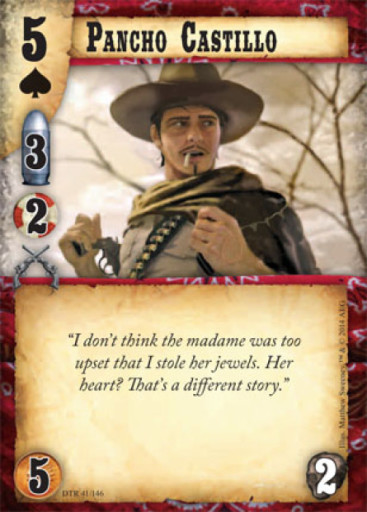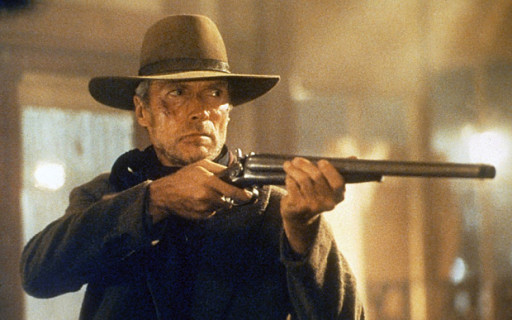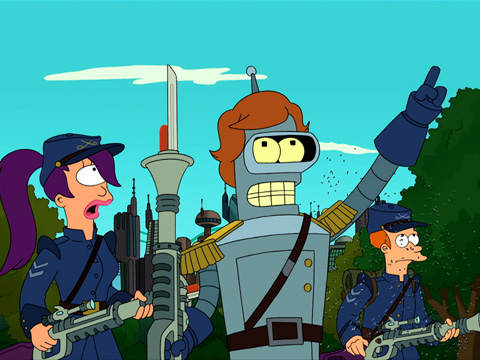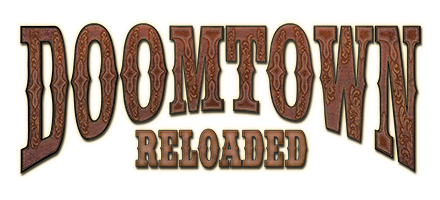With his work complete within the lands of L5R’s Rokugan, David Gordon’s stroll into the sunset has taken him to the equally tumultuous town of Gomorra. Follow him and saddle up as he trades his katana for a six-shooter and his code of honor becomes a little more flexible.
Chapter One: What Are You, Yellow?
Only a sucker gets called out at high noon. The conceit is that with the sun overhead, no one could claim it was anything less than an even fight. Hell, it might even be an even fight: two gunslingers in the street at twenty paces, both holding back until the last possible moment to draw and fire the six irons on their hips.
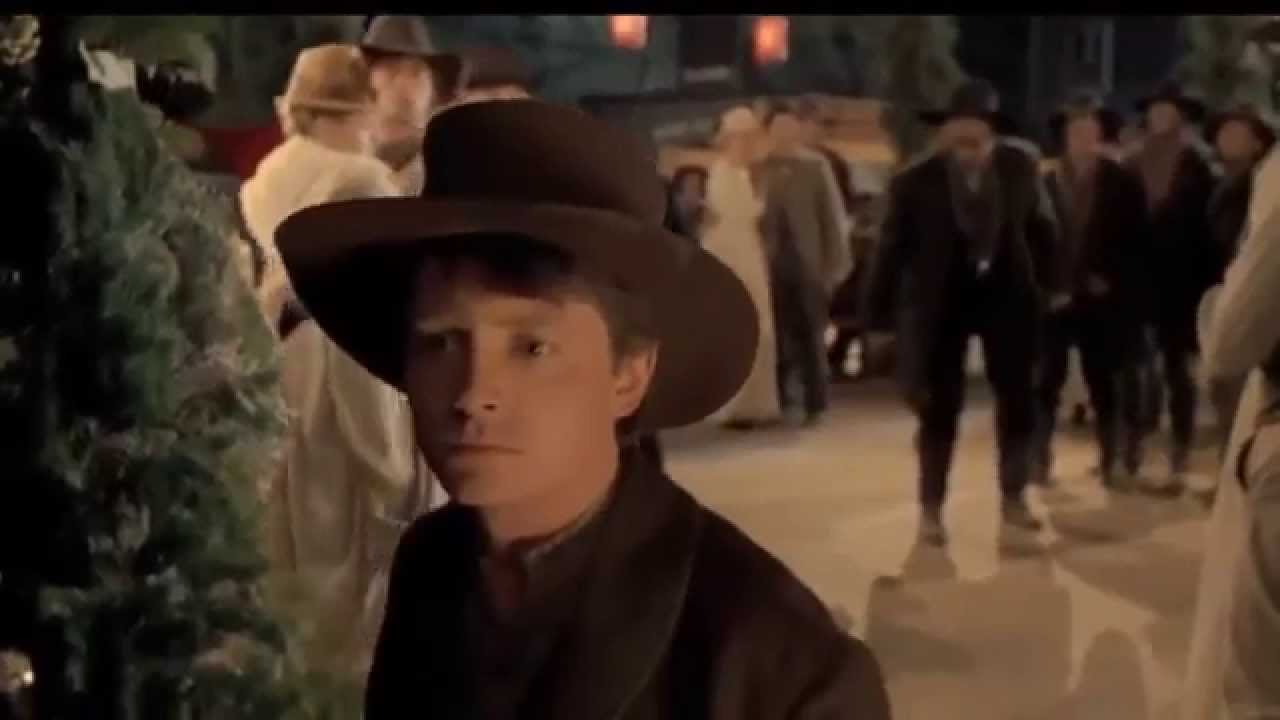
Nobody calls me Yellow
That’s the idea, anyway.
It is a fair fight where both sides have a chance at winning, where both sides have a chance at shipping up to the graveyard on Boot Hill and a chance at walking away. It is a fair fight where the only thing that matters is how fast your hands are and how clean your shot is. It is as fair of a fight as two gunslingers can have.
Only a sucker gets called out at high noon; they can have all the fair fights they want. Winning means more than fighting fair, and in the town of Gomorra, it is winning that matters at sundown, not how fair you fought.
Welcome to Doomtown
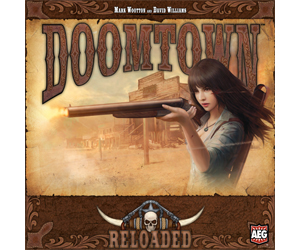 Greetings, dear reader, and welcome to the first in my series of articles about Doomtown: Reloaded. An Expandable Card Game released by Alderac Entertainment Group at Gen Con 2014, Doomtown: Reloaded is an updated version of their original Doomtown CCG, which was released in 1998. Designed by David Williams, Doomtown was a strategic card game set in the town of Gomorra in the Weird West of Deadlands. Players took on the role of factions within the town who feuded with each other for control of the valuable ghost rock mines it held. Similar to Legend of the Five Rings, Doomtown featured an interactive storyline where major tournament victories would have an impact on the setting itself. This included even the destruction of one of the game’s factions, the Flock.
Greetings, dear reader, and welcome to the first in my series of articles about Doomtown: Reloaded. An Expandable Card Game released by Alderac Entertainment Group at Gen Con 2014, Doomtown: Reloaded is an updated version of their original Doomtown CCG, which was released in 1998. Designed by David Williams, Doomtown was a strategic card game set in the town of Gomorra in the Weird West of Deadlands. Players took on the role of factions within the town who feuded with each other for control of the valuable ghost rock mines it held. Similar to Legend of the Five Rings, Doomtown featured an interactive storyline where major tournament victories would have an impact on the setting itself. This included even the destruction of one of the game’s factions, the Flock.
Doomtown was subsequently purchased along with L5R as part of Wizards of the Coast late 90s acquisition of the Five Rings Publishing Group, AEG’s CCG team. Wizards then released the first nine “episodes” of Doomtown, utilizing the Rolling Thunder release schedule, as well as reprinted the base set and released three expansions. As WotC did not hold the rights to the Deadlands setting, however, they ceased producing new content after their license with Pinnacle Entertainment ended. Like their flagship product though, eventually AEG was able to buy the game back from Wizards of the Coast and released a slightly updated base set and a few expansions. Unfortunately, they misjudged the demand for the game by this point and ultimately lost significant capital as a result of overproducing the game. Its last official expansion was released in January 2001 before ceasing production, with a web-only expansion released in March of that year capping off new content.
From 2001 to 2014, despite a devoted fan base, there was little movement on Doomtown receiving a new edition. It joined the ranks of Vampire: the Eternal Struggle, Rage, Blood Wars, Seventh Sea, and countless others on the shelves of dead CCGs. That is, until March 20th, 2014 when AEG announced Doomtown: Reloaded, its first Expandable Card Game.
Similar in every way that matters to Fantasy Flight Games’ highly successful “Living Card Game” (LCG) model, the Expandable Card Game removes the “collectible” aspect from the traditional CCG card game approach. Rather than blindly buying booster packs hoping to pull powerful rare cards, the ECG model releases a set number of all cards in a single expansion, able to purchased all at once. Players know exactly what they are purchasing, eliminating the need for a trading or secondary single market. By guaranteeing what cards the consumer receives, the game design becomes more stable. Without rarity, there is no need to scale cards by their power. Players can predict precisely how much they need to spend on the game to maintain competitiveness and stores can predict how much they’ll need to stock. All in all, the ECG format produces a more stable environment for all parties. This is the framework that allowed Doomtown to die and live again.
New Game Mechanics, Same Game Flavor
Doomtown: Reloaded was designed by Mark Woortton and saw its official release at Gen Con 2014. Like its predecessor, it was once again in the town of Gomorra, but although it decided to maintain worldbuilding continuity, Reloaded takes place years after the storyline of the CCG concluded. Doomtown: Reloaded also updated and streamlined the rules of the original game, removing the old Victory Points in favor of a simplified Control Point system.
As with old Doomtown, players represent competing factions in the town of Gomorra, a mining town on the edge of California with vast potential wealth and many unscrupulous sorts looking to exploit it. Players take turns, playing Dudes and Deeds, and maneuvering their Dudes around the town to secure the Control Points located on the Deeds. Dudes also provide Influence, and one side wins when they have more Control Points than their opponent’s Influence. Conflict in the game is handled through a special combat mechanic called a Shootout, where both players form a Posse and play a hand of Poker to see which side wins. Every card in Doomtown: Reloaded has a Bicycle deck value, and so a player’s own deck is used for the Poker hands. The side that loses has to take casualties, losing Dudes and their Influence.
All in all, Doomtown: Reloaded plays even more like an area control game with a rather swingy combat mechanic than it does a card game. It features no central life score for players to keep track of and if a deck runs out of cards, the discard pile is simply reshuffled to make the new deck. Dudes and Deeds are both considered Unique, and each player can only have one copy of the card in play at a time. Cards can also be Aced, removing them from the game pile but also preventing them from being played in the future. Dudes and Deeds that have been Aced, however, cannot be played again by that same player, adding significant risk to the shootouts.
Welcome To The OK Corral
It is in the shootouts where the game finds its most stand-out mechanic. Every shootout has three major steps.
First, players form their Posse from available Dudes. Second, they take turns playing Shootout actions, such as using weapons to eliminate opposing Dudes from the fight, increasing their own Dudes bullets, or decreasing their opponent’s bullets. Third, players create a Poker hand from cards drawn from their deck. Dudes can have both Stud and Draw bullets, and during the third phase of the shootout, these bullets decide how many cards a player can initially draw, discard, and redraw, respectively.
Then, both players discard down to five cards and compare. The side with the losing hand (or both in the case of a tie) takes casualties based on the difference in strength. A Full House going against one pair is going to inflict more casualties than a two pair against one pair. Cards can be sacrificed to absorb casualties, and then the losing side gets to decide whether to keep fighting or run home.
These shootouts add a high degree of chance to the game, but one that is mitigated by deck design. Every card in Doomtown: Reloaded has a numerical value on a scale of Ace to King, as well as a suit based on what type of card it is. Dudes are spades, Deeds are diamonds, actions are clubs, and attachments (like fancy hats, nice guns, and spells) are hearts.
Once you grasp the game’s fundamentals, deck construction becomes a matter of balancing good cards for their text and the values and suits your deck needs to win shootouts. Each deck must be composed of 52 cards, with the option of including up to two Jokers. Each unique value and suit combination is restricted to 4 cards in your deck. For example, a player can run four copies of Pistol Whip (a 5 of Clubs), and four copies of Mustang (a 5 of Hearts) in their deck, but if they want to add a copy of Bad Company (also a 5 of Clubs) they will have to remove a copy of Pistol Whip to make room.
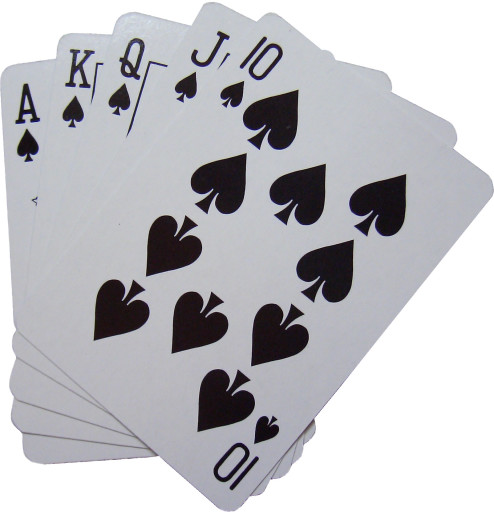 Strong decks in Doomtown: Reloaded are therefore either focused around the creation of winning poker hands, or avoiding getting into shootouts in the first place by playing powerful cards. The game itself plays fairly fast and easy, capturing the feeling of dueling gangs fighting for control of a town where the fastest gun is not always the one that wins out in the end.
Strong decks in Doomtown: Reloaded are therefore either focused around the creation of winning poker hands, or avoiding getting into shootouts in the first place by playing powerful cards. The game itself plays fairly fast and easy, capturing the feeling of dueling gangs fighting for control of a town where the fastest gun is not always the one that wins out in the end.
Now, I had not played the original Doomtown. It was on the short list of CCGs that I never dabbled with (a list that does not include such winners as Wyvern, Blood Wards, and Spellfire, I would like to add). I was always aware of Doomtown as a gamer in my late teens, but most of the play groups I had access to were either fans of Magic: the Gathering or Legend of the Five Rings. When Doomtown petered out under Wizards of the Coast and was briefly revived by AEG, I had already thought the game dead years ago. Its setting, however, was one I was quite familiar with through the Deadlands RPG system.
The Setting
Deadlands and Doomtown both take place in an alternate Earth where a Sioux shaman opened a permanent conduit to the spirit world in 1863 in an attempt to drive out European settlers from the West. This became apparent the very next day, as the many slain at the Battle of Gettysburg rose as undead and began attacking soldiers and civilians indiscriminately. Quite suddenly, and horribly, magic, undead, and many other supernatural elements began pouring into the world at the behest of nebulous, malign entities known as the Reckoners. Trapped on the far side of the conduit, they fed upon the fear generated by such forces and worked to transform the landscape into a haunted, evil wasteland. One day, when the world’s suffering and fear grew great enough, they would cross over the conduit and bring a literal Hell on Earth with them.
The Civil War dragged on due to the interference of the Reckoners, with neither the Union nor the Confederacy gaining enough traction to seal a victory. A massive seismic event then caused most of California to shatter into a series of tall plateau islands and narrow waterways. The Wild West transformed into the Weird West, where various forms of magic and monsters combat mad science and dangerous men and women.
Embracing a madcap version of steampunk aesthetic (obviously inspired by the classic Adventures of Briscoe County Jr.), this mad science itself was often powered by a new, fuel source more valuable than coal: ghostrock. Ghostrock burned hotter, longer and exposure to it could awaken the mind to vast vistas previously unexplored. It made the impossible possible, and it very quickly grew to be the main source of conflict in the Weird West. The demand is always high, and always there are dangerous people looking to control it.
First Hand Experience
I played in two Deadlands tabletop RPGs in college, and I enjoyed the setting within reason. The first character I had played was a Mexican member of a small train-robbing gang, known as the Dry Gulch Posse. My poor PC drew misfortune to all those around him, but never himself, something which amused our GM greatly. My second PC, in a game which took place years later, was a Meiji era samurai, trying to live incognito in the Weird West while keeping his daimyo’s daughter safe. It was a task, as you can imagine, that he was not destined to succeed at.
Both games had their ups and downs, but I recognize that even today the setting of Deadlands stands out still as one of the best realized genre-hybrid games. It takes even parts Western, campy scifi / fantasy, and cosmic horror, and blends them into an enjoyable and fun world.
While the original Doomtown fully captured this wacky sense of horror, Doomtown: Reloaded felt muted in comparison. The initial game itself is rooted in the more believable drama of two armed gangs, the Law Dogs and Sloane’s Gang, fighting for control of a formerly profitable boom town. Added to them were the mysterious Fourth Ring, a sinister circus peopled with spell-casting hucksters and monstrous abominations, as well as the mercantile minded Morgan Cattle Company, boosting its effective economy even further with several mad science inventions.
My first experience with the game came during an L5R Kotei in 2014, followed by another brief game at Kotei in 2015. It was not until Gen Con this year, however, where I could honestly say I got the hang of the game, and not until afterwards that I dug into my own base box. My initial playthroughs of introductory set were done with one of our site’s new graphic designers, Rhiannon McCullough, where tried on both the premade outfits of the Law Dogs and Sloane’s Gang for size. Coming off my L5R experiences, neither fit my preferences perfectly in this new western-themed setting, though I did find the aggressive nature of Sloane’s Gang to be slightly more appealing.
It would not be until I later headed out to our local play group who typically handled L5R as well as Doomtown that I found what would be my first and foremost faction in Doomtown. But that is a story for another day. Until then, dear reader, may your hand be fast, your aim be steady, and your eyes be eagle-sharp. All of them will be needed here. Gomorra’s a dangerous town, so we’ll see how well it treats me. With the recent announcement over at AEG regarding the sale of L5R, it is looking like I will be setting up shop here for a while.
Hasta la próxima , lector mi.
David Gordon is a regular contributor to the site. A storyteller by trade and avowed tabletop veteran, you can follow his journey through Gomorra by way of Rokugan. He can be reached at dave@cardboardrepublic.com.
You can discuss this article and more on our social media!
Photo Credits: Doomtown images by Alderac Entertainment Group; Back to the Future III by Universal Studios; Unforgiven by Warner Bros.; Futurama by Comedy Central

